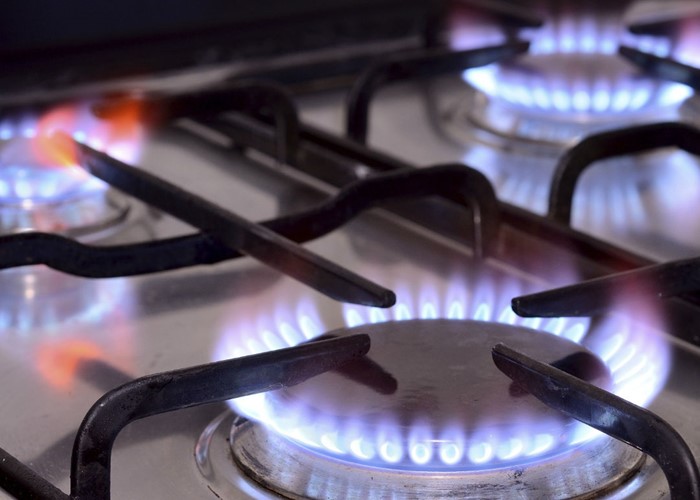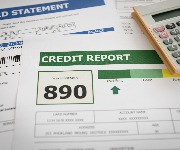Fix your energy bills for four years with Sainsbury’s

Sainsbury's has launched a new tariff which will lock in energy prices until 2018. Is it worth the added cost?
Sainsbury’s has launched a new fixed price energy tariff which will lock in your gas and electricity bills until April 2018.
It costs an average of £1,316 per year, which is a lot more expensive than many other tariffs. Is it worth paying extra?
Fix to April 2018
Signing up to a fixed rate energy tariff gives you some peace of mind as you know exactly what you are going to be charged each month. You won't need to worry about the next round or two of energy bill price rises and it's easier to work out your budgets.
The new tariff from Sainsbury’s, Fixed Price March 2018, costs an average of £110 a month for dual fuel bills. On top of this you’ll also collect up to 600 Nectar points when choosing the deal. If you cancel before the end of the term you’ll pay a penalty fee of £50 for each fuel - so a £100 hit if you cancel a dual bill.
Choosing the Sainsbury’s tariff works out at an extra £52 per year compared to the standard bill of £1,264. But you’ll be free from potential rises during the next four winters.
The second longest fixed rate tariff comes from Npower at £1,212 a year, £104 cheaper than the Sainsbury’s tariff. It’s the Price Protector December 2017 and will lock prices in for almost four years. EDF and Co-operative Energy both have tariffs which last until March 2017 which these cost £1,202 and £1,226 respectively.
The table below shows the longest fixed rate tariffs around today.
|
Supplier |
Average cost |
Saving vs typical bill* |
Cancellation penalties |
|
ScottishPower: Help Beat Cancer Fixed Price Energy Jan 2017 Online |
£1,190 |
£133 |
£25 per fuel if you switch away before end of fix |
|
£1,202 |
£121 |
None |
|
|
£1,212 |
£111 |
None |
|
|
£1,226 |
£97 |
None |
|
|
£1,316 |
£7 |
£50 per fuel if you switch prior to end of fix |
*saving calculated against an average bill of £1,323. Source: energyhelpline.com, 21/01/14. calculations are for an average usage dual fuel household paying by monthly direct debit. Average usage as defined by OFGEM is 13,500 kWh pa of gas and 3,200 kWh pa of electricity.
Compare gas and electriticy tariffs with lovemoney.com
The cheapest energy tariffs
If price is your main concern when looking at energy tariffs the cheapest available comes from First Utility and costs an average of £1,037 per year. It’s fixed until July 2015 and is significantly cheaper than the Sainsbury’s tariff. Ovo takes second place with its Cheaper Energy Fixed tariff costing £1,042 for 12 months.
Spark Energy provides an even cheaper tariff costing an average of £1,025 per year, but this is only if you pay the direct debit in advance which may not be suitable for everyone.
Here are the five cheapest tariffs available right now.
|
Supplier |
Average cost |
Saving vs typical bill* |
Cancellation penalties |
|
£1,037 |
£286 |
£30 per fuel if switching before fix end |
|
|
£1,042 |
£281 |
£30 per fuel if switching before fix end |
|
|
£1,061 |
£262 |
£31.50 per fuel if you switch away before end of fix |
|
|
£1,077 |
£246 |
None |
|
|
£1,081 |
£242 |
£25 per fuel if you switch away before end of fix |
*saving calculated against an average bill of £1,323. Source: energyhelpline.com, 21/01/14. calculations are for an average usage dual fuel household paying by monthly direct debit. Average usage as defined by OFGEM is 13,500 kWh pa of gas and 3,200 kWh pa of electricity.
Fixed price versus variable tariffs
The kind of energy tariff you choose will depend completely on your own circumstances. A fixed price tariff will give you the extra security of knowing in advance what you'll be paying.
But that security comes at a premium - there is a difference of almost £300 in the new Sainsbury’s deal and the cheapest tariff on the market, from First Utility.
Therefore it is worth weighing up all the options before you decide. To find out how well the different energy companies fare for customer satisfaction read our article Customer satisfaction with energy providers hits a new low.
Compare gas and electriticy tariffs with lovemoney.com
More on gas and electricity:
How I saved £1,200 on my new boiler
Who owns the UK's big energy companies?
Customer satisfaction with energy providers hits a new low
Energy firm complaints rocket 106%
Average Npower customer to save £50 following price changes
The UK's worst energy provider
Most Recent
Comments
-
Even if rival suppliers have very competitive tarrifs that are only a few pounds apart, switching can still save you money if you switch via a cashback site like quidco. Generally quidco cashbacks are not available to existing customers, so you only save if you switch. And in my humble view nPower's billing system is absolute pants (they have recently upgraded it and i'm not sure how much better it will be - if any). For a start they will only update an account every six months - so even if you can get into their website and to your online account, you will not be able to see exactly where you stand. Other companies will take your meter readings and in 2-3 days produce an invoice and update the account.
REPORT This comment has been reported. -
Qmuk, glad to be both your and gmuk's friend. It's not easy to determine your energy cost from your two posts but it might be worth you considering moving to another supplier. The big "six" rely upon our lethargy - that's how they make their profits. None of them provide brilliant service. They ALL supply the same gas through the pipes, the same electric through the wires. They can only be judged by their price and service.
REPORT This comment has been reported. -
Mike, it's Qmuk, not gmuk, by the way, and if you hadn't worked it out already, my friend, you'll notice that when I said myself paying an extra £45 for dual fuel for a period of time, I was referring to the amount I'm paying already for the same duel fuel with an extra £45 on top, hence, only paying £65 pcm... I've been with my energy provider for quite a few years now and although I get the occasional muppet ring me up trying to get me onto a "better deal," I politely tell them after they've spent a good 20-30 minutes waffling on, that I am quite satisfied with the company I'm with, not even telling them who it is, so they end the call a bit red faced, so appreciate the info above but I'll be fine for quite a while yet, okies!!!
REPORT This comment has been reported.
Do you want to comment on this article? You need to be signed in for this feature









26 January 2014